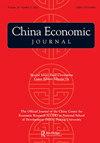Introduction to the special issue on digital currency
IF 2.3
Q1 ECONOMICS
引用次数: 3
Abstract
Although money in digital form is not new to modern economics, advances in technology have led to a revolution in digital currencies and have facilitated instantaneous peerto-peer transfers of value, which was previously impossible. The advent of new digital currencies could redefine the way in which payments and users’ data interact, reshape the nature of currency competition, and rebuild the architecture of the international monetary system (Brunnermeier, James, and Landau 2019). During the last decade, digital currencies have surfaced in a variety of contexts. The earliest context was cryptocurrencies (CPMI, 2015), such as Bitcoin and Litecoin, which are typically issued and transferred via a decentralized distributed ledger. They are not a liability of any entity and not backed by any authority and thus have zero intrinsic value. Their values are unstable as they are driven by the belief that other market participants would accept them as a means of payment or that their value will continue to increase at a later point. As a result, they are now viewed more as speculative assets rather than a medium of exchange. A special type of cryptocurrency called Stablecoin, such as Libra (proposed by Facebook) and Tether, share a decentralized nature with Bitcoin, but differ in that Stablecoin attempt to maintain price stability. There are generally two ways to ensure that Stablecoins are stable – through collaterals or through algorithms. Collateralized Stablecoins are usually backed by reserve assets, including fiat currency reserves like the US dollar, commodities like oil, or precious metals like gold or silver. Algorithmic Stablecoins do not use reserves but retain a stable price by controlling the supply of coins, implemented by an autonomous consensus mechanism and smart contracts. Given their (alleged) capacity to preserve value over time, the use of Stablecoins, especially those issued by Big-Tech firms, could rise as global payment instruments and pose governance challenges for international finance and monetary policies (FSB, 2020). Given that new technologies and market entrants challenge the traditional bank-based payment systems, 80% of central banks worldwide are currently considering a new type of digital currency controlled by central banks, that is, central bank digital currencies (CBDCs) (Boar, Holden, and Wadsworth 2020). CBDCs are new variants of central bank money that are different from physical cash or central bank reserve/settlement accounts. There are two broad types of CBDCs which are based on their different levels of accessibility: wholesale CBDCs or retail CBDCs. The former is a restricted-access digital数字货币特刊简介
尽管数字货币对现代经济学来说并不新鲜,但技术的进步导致了数字货币的革命,并促进了价值的即时对等转移,而这在以前是不可能的。新数字货币的出现可能会重新定义支付和用户数据交互的方式,重塑货币竞争的本质,并重建国际货币体系的架构(Brunnermeier,James,and Landau,2019)。在过去的十年里,数字货币出现在各种各样的环境中。最早的背景是加密货币(CPMI,2015),如比特币和莱特币,它们通常通过去中心化的分布式账本发行和转移。它们不是任何实体的责任,也没有任何权威机构的支持,因此其内在价值为零。他们的价值是不稳定的,因为他们相信其他市场参与者会接受他们作为支付手段,或者他们的价值在以后会继续增加。因此,它们现在更多地被视为投机资产,而不是交换媒介。一种名为Stablecoin的特殊类型的加密货币,如Libra(由Facebook提出)和Tether,与比特币具有去中心化的性质,但不同之处在于Stablecoins试图保持价格稳定。通常有两种方法可以确保Stablecoin稳定——通过抵押品或通过算法。抵押稳定币通常由储备资产支持,包括美元等法定货币储备、石油等大宗商品或黄金或白银等贵金属。算法稳定币不使用储备,但通过控制硬币供应来保持稳定的价格,通过自主共识机制和智能合约实现。考虑到稳定币(据称)随着时间的推移保持价值的能力,稳定币的使用,尤其是大型科技公司发行的稳定币,可能会作为全球支付工具而增加,并对国际金融和货币政策构成治理挑战(FSB,2020)。鉴于新技术和市场进入者挑战了传统的基于银行的支付系统,全球80%的央行目前正在考虑一种由央行控制的新型数字货币,即央行数字货币(CBDC)(Boar、Holden和Wadsworth 2020)。CBDC是央行货币的新变体,不同于实物现金或央行储备/结算账户。CBDC有两大类型,它们基于不同的可及性水平:批发CBDC或零售CBDC。前者是限制访问的数字
本文章由计算机程序翻译,如有差异,请以英文原文为准。
求助全文
约1分钟内获得全文
求助全文

 求助内容:
求助内容: 应助结果提醒方式:
应助结果提醒方式:


